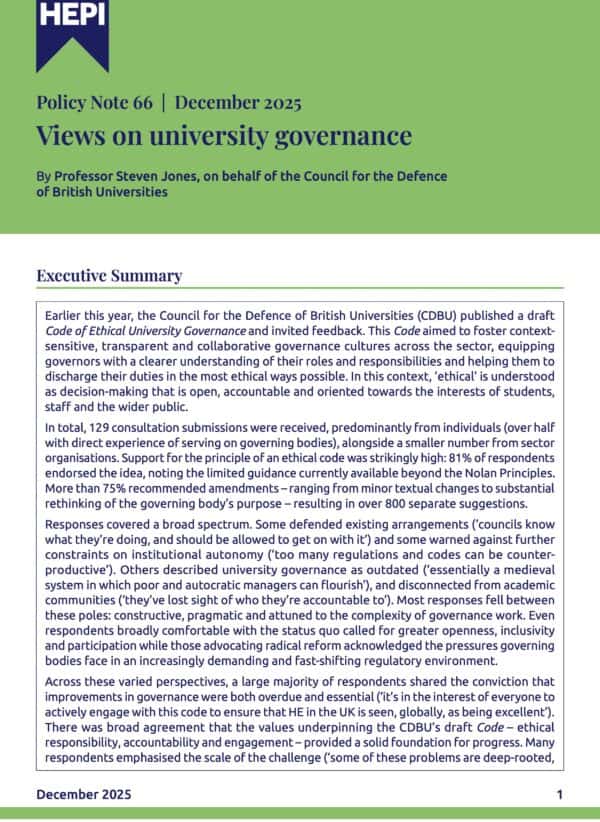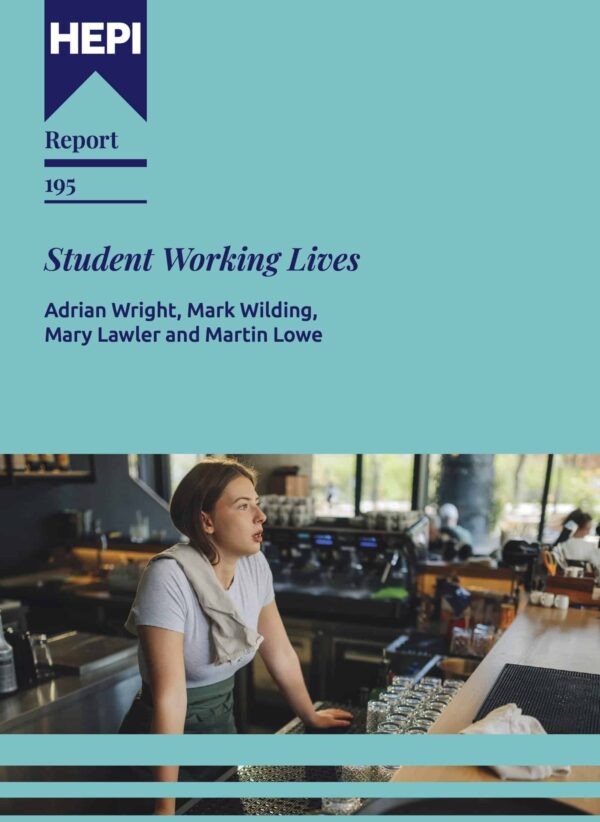What the white paper told us about the Government’s future plans for R&D
This blog was kindly authored by Dr Hollie Chandler, Director of Policy at the Russell Group. It is the third blog in HEPI’s series responding to the post-16 education and skills white paper. You can find the first blog here, and the second blog here.
When the white paper finally arrived, much of it confirmed the speculation that’s been rife all summer. Namely, that the Government wants a more joined-up skills sector where universities and FE collaborate more, offer a clearer set of pathways for post-16 choices, and widening opportunity for students from disadvantaged backgrounds. There was also a strong focus on quality, presented as a deal for the increase in tuition fees – a step towards financial sustainability that will be significantly undermined by the international levy.
But alongside the paper’s focus on further education and vocational qualifications – most prominently the newly-announced V-levels – there was plenty of recognition for postgraduate skills and the UK’s world-leading research base.
This was a welcome moment of focus for the postgraduate research community. These students are the lifeblood of our research and development ecosystem, but the number of new researchers starting a postgraduate qualification is in decline – decreasing by 10.4% between 2018/19 and 2023/24. If the UK is to become a true world leader in high-growth R&D sectors, then this is a real concern. The government’s own labour market projections show demand for workers educated beyond graduate level will grow 53% by 2035: the biggest increase for any qualification level. So it’s encouraging to see the Government considering how to bolster this vital talent pipeline.
Part of this involves ensuring postgraduate study is more accessible to students from broad backgrounds, as well as increasing opportunities and support for people to use their skills and expertise in research settings. It’s an area that has long been overlooked in widening participation conversations, which is why the Russell Group recently launched a dedicated workstream to consider policies and share best practice. It’s about increasing opportunity, but also about ensuring we harness a wide spectrum of skills, knowledge and perspectives to inform vital research. For this to succeed, the conditions and culture of research must be set up to retain talent through the trickier early-career stages. It’s promising to see commitments to improving conditions, such as parental and medical leave, so postgraduate researcher students have the support they need.
As always, many of the challenges come back to funding. Cost recovery on research is at a historic low, threatening the sustainability and global competitiveness of valuable R&D. Although UKRI commits to funding 80% of the full cost of grants, the reality is UK universities are only receiving 67% of their costs from funders – down from 75% in 2015/16. The Russell Group has previously explored a number of drivers behind this, and the white paper does reiterate some of the useful steps UKRI is taking. This includes making sure equipment is funded at 80% and confirming that matched funding by universities, which increasingly eats into cost-recovery rates, is not required. These are not new announcements – and there’s a long way to go if we’re to reach that 80% funding benchmark – but the government is making the right noises on better understanding cost-recovery challenges and pledging a concerted effort alongside charities, funding bodies and universities to tackle the problem together.
The white paper places significant emphasis on the role of universities in regional economic growth and commits to creating a research system that enables collaboration and supports specialisation. We await further details on the “funding reforms” that will achieve this, but it’s encouraging to see a renewed commitment to dual support research funding and QR, and protecting curiosity-driven research through a new strategic objective for UKRI. We hope this means the government will be looking to address the real-terms decline in QR seen in recent years (down by 16.5% since 2010).
The white paper also confirms that we can expect a review of the HEIF as the Government looks to align it more closely with the growth mission. We know HEIF brings great returns on investment: every £1 invested yields £14.80 at sector-level. Large research-intensive universities deliver an even higher return on investment from their HEIF allocations, as much as £20 once spinout performance is accounted for. We have long called for caps on HEIF to be raised, given its potential. For example, our modelling suggests that tripling HEIF could deliver around £11bn for the economy.
There was no such funding boost indicated in the white paper, but there was recognition of HEIF’s power to generate growth by de-risking innovation, driving technology transfer and building entrepreneurial capacity locally and nationally. However, there are a lot of unanswered questions on how exactly HEIF could be pivoted towards the growth mission.
A major benefit of HEIF, just like QR, is its flexibility. Our universities use it for everything from boosting pre-seed investment capabilities to establishing regional business hubs and empowering student entrepreneurs. It’s natural that the government wants the return on public investment to meet national priorities, but any blanket tailoring of how the fund is spent could impact its regionally specific benefits. It will be important to consult closely with the sector to make sure any review of HEIF enhances how universities contribute to local economies and doesn’t restrict initiatives that are already performing well.







Comments
Jonathan Alltimes says:
Specialisation:-
The most powerful action the government could enact is the concentration of research funds in research-led institutions. A mechanism for enabling new entrants will need to be found.
The government should mandate as near as possible to 100% of costs are covered by the grant for government priorities, so that there is no cross-subsidy from teaching or other sources and to other research. The concentration of research funds can go towards achieving this objective.
The money from HEIF should be re-allocated outside of the universities towards a new seed corn fund to support self-sustaining government procurement projects for developing new scalable technologies.
What Adam Smith tells you and Joseph Schumpeter didn’t.
Reply
Add comment